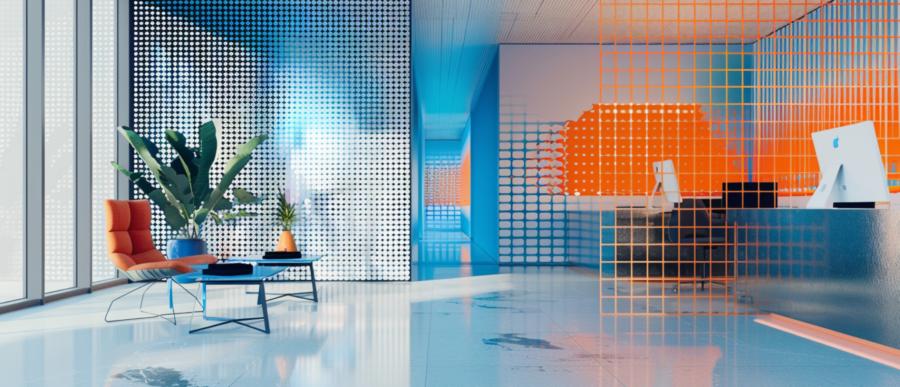The good news? Strategic office layout isn’t just about where to put the snack station (although, let’s be honest, that’s critical). It’s about creating an environment that enhances motivation, fosters collaboration, and keeps productivity flowing like the coffee machine on Monday mornings.
First Impressions Matter: The Entryway Effect
As employees step into the new office for the first time, what they see immediately sets the tone. If they’re greeted by a confusing layout or a dimly lit reception, it might feel more like entering a labyrinth than a workplace. That’s not the vibe you want.Creating a bright, welcoming entryway with clear signage and some plants (ones that you won’t forget this time) can make all the difference. Studies have shown that natural elements in the workplace can reduce stress and increase overall happiness. In other words, a fern by the door might do more than just look pretty – it could literally boost morale.
The Open Plan Conundrum
Open-plan offices are like cilantro – some people love them, others would rather avoid them at all costs. While the idea behind open plans is to encourage collaboration and communication, the reality is often different. An overly open space can lead to distractions, lack of privacy, and the dreaded sound of your co-worker’s endless gum-chewing.The key here is balance. Think of your new office as a patchwork of spaces – private areas for focused work, and communal spaces for collaboration. You don’t have to choose between cubicles or chaos; a blend of both can do wonders for productivity. And if you do go open-plan, at least invest in some noise-cancelling headphones. Your employees (and their sanity) will thank you.
Light Up Their Lives (Literally)
One of the most underestimated aspects of office design is lighting. It’s often the last thing people think about, but bad lighting can make an otherwise excellent office feel like a cave. Fluorescent bulbs? Sure, they’re bright, but no one ever felt energized under their cold, sterile glow.Natural light is the holy grail of office lighting. If your new space allows it, position desks near windows to maximize sunlight exposure. Not only does it improve mood, but it’s also been linked to better sleep and overall well-being. And let’s face it, an employee who isn’t squinting at their screen like a mole is a happier, more productive one.
For those dim corners of the office, consider investing in warmer, softer lighting. Harsh, overly bright lights can cause eye strain and fatigue, which is the last thing you want in a workspace. Mood lighting isn’t just for date night – it’s for the office, too.
The Power of Personal Spaces
It’s tempting to design an office that looks like it popped out of a sleek magazine spread, but don’t forget: people work here. Employees thrive when they have some control over their environment. Allowing them to personalize their desks – whether that’s with photos, trinkets, or a tiny desk cactus – fosters a sense of ownership and belonging.Imagine trying to be productive in a sterile, cookie-cutter workspace that feels like no one lives there. Personal touches go a long way in making the office feel less like a corporate box and more like a place where people actually want to spend their time. Besides, a team full of individuals who can make their workspace reflect their personality is bound to be more creative and engaged.
Breakout Zones: Not Just for Escaping
A well-placed breakout zone can do more than just offer a spot for a quick coffee or snack break. It’s a space that encourages informal interactions, where ideas can flow outside the structured meeting room. After all, some of the best ideas come up when people are relaxed and not hunched over a desk, frantically typing away.Consider creating a few different breakout zones: one for quiet reflection, another for casual conversation, and perhaps even a game area for a little fun (and friendly competition). These zones don’t just give employees a place to recharge; they signal that the company values a balanced work life. And honestly, who doesn’t need to blow off a little steam after an intense meeting? Whether it’s a foosball table or a simple lounge, providing employees with spaces to unwind can work wonders for morale.
Sound Control: Silence is Golden
If there’s one thing that can derail productivity faster than a slow internet connection, it’s noise. Conversations carry, phones ring, and before you know it, everyone’s concentration has evaporated.Effective sound management in an office is crucial, especially after relocating when employees are still adjusting. Acoustic panels, quiet rooms, or even sound-masking systems can help create a more peaceful atmosphere. This doesn’t mean turning the office into a library, but giving people the option to retreat to quieter areas when needed is a productivity game-changer. Plus, no one really wants to overhear Gary’s three-hour phone call with his plumber.
Wrapping Up: Design the Future, Not Just the Office
At the end of the day, an office is more than just a physical space; it’s a reflection of your company’s values and culture. Thoughtful office design post-relocation can bridge the gap between the upheaval of moving and creating an environment where employees feel motivated and engaged. Whether it’s perfect lighting, breakout zones, or the simple act of letting people personalize their spaces, these small design decisions can have a big impact.And who knows? With the right office setup, you might just find employees actually looking forward to coming to work – cactus and all.
Article kindly provided by safra.co.za

